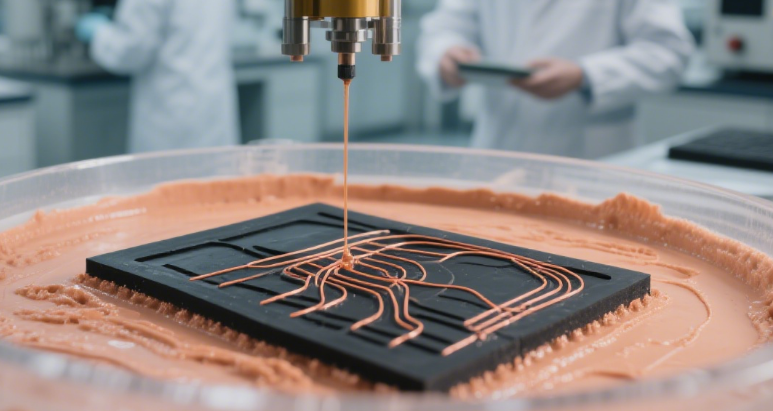Exploring the Temperature Resistance of Silicon
Silicon, a versatile and abundant element, has become the cornerstone of modern technology due to its remarkable physical and chemical properties, particularly its unique temperature resistance characteristics. Understanding how silicon responds to varying temperatures is crucial for numerous applications, ranging from semiconductor devices to high – temperature engineering materials.
Crystal Structure and Fundamental Properties
Silicon has a diamond – like cubic crystal structure. In this structure, each silicon atom is covalently bonded to four neighboring silicon atoms, forming a highly symmetric and stable lattice. The strength of these covalent bonds is fundamental to silicon’s temperature – resistant behavior. The energy required to break these covalent bonds is relatively high, which means that silicon can maintain its structural integrity over a wide temperature range.
The melting point of silicon is approximately 1414 °C (2577 °F). This high melting point is a direct result of the strong covalent bonding within the crystal lattice. Below its melting point, silicon exhibits good thermal stability. As the temperature increases, the thermal energy causes the silicon atoms to vibrate more vigorously within the lattice. However, the covalent bonds keep the atoms in a relatively fixed position until a significant amount of energy is supplied to break the bonds and transition the solid silicon into a liquid state.
Temperature Resistance in Semiconductor Applications
In the semiconductor industry, silicon is the most widely used material for fabricating integrated circuits (ICs). The performance of silicon – based semiconductor devices is highly sensitive to temperature changes. At low temperatures, the electrical conductivity of silicon – based semiconductors is mainly determined by the number of thermally generated electron – hole pairs. As the temperature rises, more electron – hole pairs are generated, which can increase the conductivity of the semiconductor. However, this also leads to an increase in unwanted electrical noise and can cause issues such as thermal runaway in some devices.
To ensure the reliable operation of semiconductor devices, temperature control is critical. For example, in microprocessors, the operating temperature is typically kept within a range of 0 – 100 °C. Beyond this range, the performance degradation becomes significant. Special packaging and cooling technologies, such as heat sinks and fans, are often employed to dissipate heat and maintain the temperature within the optimal range.
On the other hand, high – temperature silicon – based semiconductors are also being developed for applications in harsh environments, such as automotive engines, aerospace, and industrial furnaces. These high – temperature semiconductors are designed to withstand temperatures up to 200 – 300 °C. Through techniques like doping with specific impurities and optimizing the device structure, researchers have been able to enhance the thermal stability of silicon – based semiconductors, enabling them to operate reliably at elevated temperatures.
Silicon in High – Temperature Engineering Materials
Silicon is also used in the production of high – temperature engineering materials, such as silicon carbide (SiC) and silicon nitride (Si₃N₄). These materials inherit and even surpass some of the temperature – resistant properties of silicon.
Silicon carbide has an extremely high melting point of around 2730 °C. It combines the excellent properties of silicon, such as good chemical stability and electrical characteristics, with enhanced mechanical strength at high temperatures. SiC – based materials are used in high – temperature applications like aerospace engine components, where they can withstand the extreme heat generated during flight. The high thermal conductivity of SiC also helps in efficient heat dissipation, further enhancing its performance in high – temperature environments.
Silicon nitride, with a melting point of about 1900 °C, has excellent thermal shock resistance. This means it can rapidly withstand large temperature changes without cracking or breaking. It is widely used in components for high – temperature industrial processes, such as hot – pressing dies and gas turbine parts. The unique microstructure of silicon nitride, with its strong covalent – like bonds and fine – grained structure, contributes to its outstanding temperature – resistant and mechanical properties.
Challenges and Future Developments
Despite its impressive temperature – resistant properties, silicon still faces challenges in some high – temperature applications. For instance, in ultra – high – temperature environments above 1500 °C, silicon – based materials may start to react with oxygen in the air, leading to oxidation and degradation of their properties. To address this, surface coating technologies are being explored. Coatings made of materials like ceramics or precious metals can form a protective layer on the surface of silicon – based components, preventing oxidation and extending their service life at high temperatures.
In the future, research into the temperature resistance of silicon is likely to focus on further improving the performance of silicon – based semiconductors and high – temperature materials. Nanotechnology may play a crucial role, as manipulating the structure of silicon at the nanoscale could potentially lead to the creation of new materials with enhanced temperature – resistant and other properties. Additionally, the development of new manufacturing processes and the integration of different materials with silicon will open up new possibilities for high – temperature applications, enabling the creation of more efficient and reliable devices and components in various industries.
In conclusion, the temperature resistance of silicon is a complex and fascinating area of study. Its unique crystal structure and bonding characteristics endow it with significant thermal stability, which has been harnessed in a wide range of applications. As technology continues to advance, our understanding and utilization of silicon’s temperature – resistant properties will undoubtedly lead to further innovations and breakthroughs in many fields.

















